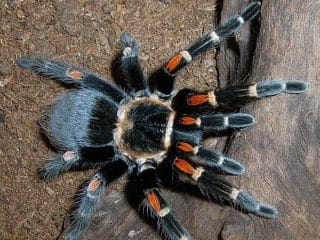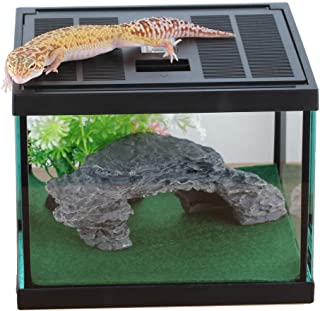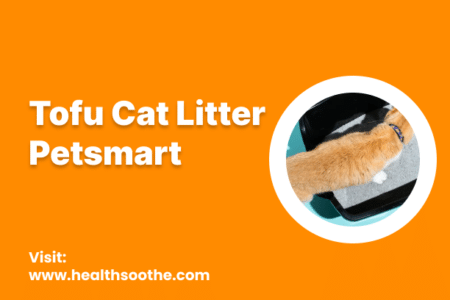If you have ever come in contact with Tarantulas [mfn]https://en.wikipedia.org/wiki/Tarantula[/mfn] – the large, hairy, eight-legged spiders that feeds on other insects and lives either on land or in trees, you will understand why they need to be kept in a safe and secure premium or do-it-yourself container that imitates their natural habitat.
[ninja_tables id=”67335″]
Tarantulas are scary and venomous spiders that are hairy and exceptionally large (in most cases). They are known to be carnivorous and are predators to large insects and sometimes, reptiles. Despite their scary appearance, they are, especially recently, kept as pets for their colourful abdomen and legs.
In this article, you will be fortified with information about the best tarantula enclosures you can purchase in case you are interested in keeping some tarantulas as pets. Also, you will have access to information about the physical attributes and feeding habit of these giant spiders and how these attributes may affect their habitat. Check out our reptizoo, bearded dragon tank.
Overview on Tarantulas
Tarantulas belong to the Arthropoda phylum and Theraphosidae family of spiders. They are mostly known for their hairy body and large bodies. The hair they have is technically called Setae – hair-like or bristle-like structures on organisms. They can be found in different parts of the world, ranging from Central America to Africa, Asia, Europe, and are most abundant in Australia.

Tarantulas have eight legs and a set of appendages called Chelicerae [mfn]https://www.sciencedirect.com/topics/veterinary-science-and-veterinary-medicine/chelicerae[/mfn]. While the eight legs are for movement, the chelicerae, located under the tarantula’s eyes, contains the venom with which the tarantula paralyzes it preys. The venom gains entry into the preys’ bodies through its fangs.
Different species of tarantulas have varying degree of venom and damage they can do their preys and whatever they attack. While the bites of some tarantulas are believed to be as painful as a wasps’ sting, there are tarantulas that even humans should be worried about as their danger is not only in their bite but also in their venom. The African tarantula, Pelinobius muticus for instance, is said to possess a venom that causes strong hallucinations. Other tarantulas, such as those of the Poecilotheria species do not have their effect immediately they bite. Their bite can cause muscle cramp that lasts several days.
They commonly feed on millipedes, insects, and centipedes. However, larger ones feed on bats, rats, small snakes, and lizards.
Tarantulas can grow to about 4 inches of body length and 12 inches of leg length. However, their weight can be between 85 g to 170 g, with the male tarantulas having longer legs and the females having thicker legs.
Tarantula Habitat
Tarantulas are suited for the open areas that have dry and well-drained soils. This characteristic of the soil facilitates their burrowing. This is why they are mostly found in tropical and desert areas, where they can make burrows in the soil and line them with silk for stability.
As the tarantula grows bigger, it enlarges the burrow.
There are also some tarantulas that prefer to live on trees. They make their silk webbing in cracks of trees, on pineapple plants and sometimes, banana trees. Some even venture to live in cracks of rocks and caves.
However, those that are kept as pets are mostly kept in enclosures. The enclosures usually bear resemblance and possess the elements that make their habitats livable. This leads us into the best enclosures for tarantulas
Best Enclosure for Tarantulas
Exo Terra Glass Terrarium Kit
Specification
| Material | Glass |
| Dimension | 12 x 12x 12 inches |
| Weight | 6 kg |
| Lock | Yes |
| Substrate | Yes |
The Exo Terra Glass Terrarium Kit is a glass enclosure that measures 12 inches in length, breadth, and height. It is fitted with escape-proof doors that can be locked by turning the knobs t the base of it to keep the tarantula in.
This enclosure, fit for keeping a tarantula can be filled with substrate such as soil for the spider to burrow in and insects and other preys it feeds on can be supplied into the enclosure for it to feed.
The transparent glass material affords you unencumbered view of the colourful spider when it is out of its burrow and ventilation is achieved through the front window.
Bioactive FX 1.25 Gallon Magnetic Acrylic Tank
Specification
| Material | Acrylic |
| Dimension | 8 x 6x 6 inches |
| Weight | 1.2 pounds |
| Lock | Yes |
| Substrate | Yes |
This is a clear container that encourages ventilation from all sides of the box. The rectangular box is clear and affords you a good view of your pet when you wish to entertain yourself with their activities.
It discourages escape of your tarantula as it has a magnetic shut door at the top. Once closed, your tarantula will be unable to open it.
You can furnish the enclosure as you please, and depending on the type of tarantula you have. Fill the box with sand for terrestrial tarantulas that burrow or erect stems of trees for tarantulas that are arboreal in nature.
Mabeler Magnetic Acrylic Cage
Specification
| Material | Acrylic |
| Dimension | 4 x 3.2 x 2.4 inches |
| Weight | 6 kg |
| Lock | Yes |
| Substrate | Yes |
The Mabeler Magnetic Acrylic Cage is suitable for housing your tarantula as it provides all the necessities that will keep your spider safe and comfortable.
This cage is made of acrylic and its acrylic material is as clear as glass, giving you an obstructed view into the living quarters of your spider pet.
It comes with substrate, rocks, and twigs in the enclosure, all suitable for your tarantula’s comfort as they replicate or is similar to what its natural habitat looks like. The spider can make abode in the substrate, if it so wishes, or spin webbing on the rock cracks or spaces between twigs.
There are holes around the top of the box to allow for exchange of air. The top lid has magnet that holds it firm to the side of the box for security against pet escape.
Glass Tank Spider Box Kit
Specification
| Material | Glass, Resin |
| Dimension | 7.8 x 7.8 x 5.9 inches |
| Weight | 5.31 pounds |
| Lock | Yes |
| Substrate | No |
The Glass tank spider box is an enclosure made to hold pets such as tarantulas and other insects or reptiles. It is made of clear glass that offers you an all-round view of the interior of the box.
Inside the box, there is a green carpet, installed to imitate the outdoor environment your pet might be familiar with. This helps it settle in faster. Also, there is a fake rock that balances on the green carpet, a perfect hiding place for your tarantula. It can spin its web around the opening to protect itself. Or it might prefer the greenery of the fake flower that is just behind the rock.
You can feed your tarantula through an opening at the top lid, where small holes are made to facilitate ventilation. Also, there are holes on the side of the box for the same reason.
It is easy to lock and is washable.
Remasiko Magnetic Acrylic Reptile Cage
Specification
| Material | Acrylic |
| Dimension | 3 x 3 x 6 inches |
| Weight | 7.05 ounces |
| Lock | Yes |
| Substrate | Yes |
This tarantula enclosure is made with acrylic. It is transparent throughout and offers the full view of all the content of the box.
It comes filled with a substrate, topped with pseudo-vegetation and a mass of rock in the box. These features combine to provide a quasi-natural environment for the tarantula qnd helps it thrive well.
On either side of the box, there are two rows of holes, made to facilitate ventilation. Also, the top of the tarantula enclosure is made to lock when two magnetic parts beneath the lid and on the inside of the box meet, creating a no-escape room for your tarantula.
Conclusion
The tarantula is a scary and large specie of spider that is recently kept as pet. It can be a dangerous pet to keep as it is venomous and its venom can cause a human to experience muscle cramps that lasts for days.
Despite their scary appearance, they are kept as pets in enclosures that mostly contain elements of their natural habitats such as soil for them to burrow in.
Tarantulas are easy-to-keep pets.




